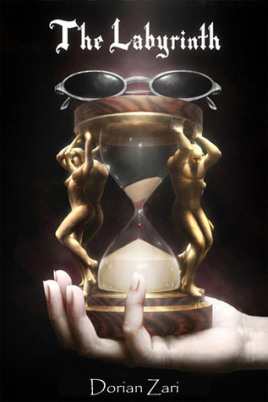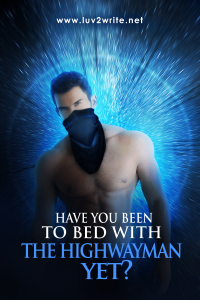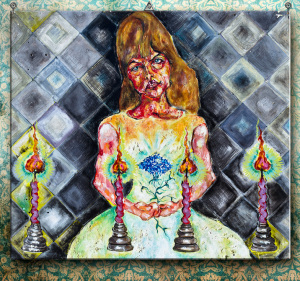Ingrid Hall's Blog, page 13
April 20, 2015
Review of A Man from Rio by Shayne Youngblood
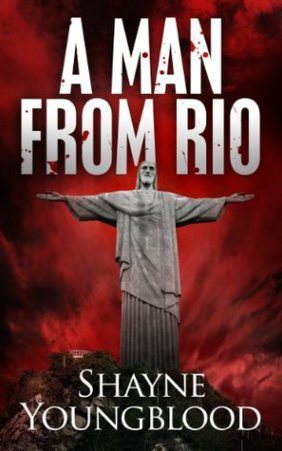 A Man from Rio by Shayne Youngblood
A Man from Rio by Shayne Youngblood
Shayne Youngblood has many things, but a permanent address is not one of them. He travels the world, driven by adventure and his own conception of freedom, which prevents him from settling down, growing roots, or having any long-term commitments. He wrote his first novella, A Man from Rio, while living in the favelas of Rio de Janeiro.��His current whereabouts are unknown
A Man From Rio is a gritty, tough-guy read that falls deeply into the noir genre of mystery thrillers. Its brief, choppy prose captured my attention right from the start.
“The damn shower didn’t work again.
“I have to talk to Laercio about this.
“The cold water dripping.
“I wiped my face with a dirty towel, dragged myself to bed.
“Too much blood. Maybe I should see a doctor tomorrow.”
This is not a book for people who like their characters to wear their complexity like a shimmering cape. It’s a tough, no-nonsense examination of life in the drug and crime-ridden city of Rio de Janeiro, written by a man who obviously has spent a lot of time in the favelas (shantytowns) where most of the action takes place���and there’s plenty of action.
The lead character, who has the same last name as the author (Youngblood), loses his teenage, hot Brazilian girlfriend and must search for her, weaving his way around and through near-constant crime and violence. He narrowly escapes death several times at the hands of crime lords, and experiences short-term ecstasy in the muzzy embrace of coke-happy partygoers throughout the city.
Trouble starts when he accepts a job to accompany a “client” into the woods surrounding Rio, where they are suddenly arrested by the crooked and thoroughly corrupt police force. More trouble ensues when he goes in search of his girlfriend through the steamy underbelly of urban Rio.
The action continues and finally reaches a bloody and horrifying series of climaxes as the bad guys ���well, some of the bad guys, anyway���get what’s coming to them: everything from gunshots in the face to being parboiled inside a couple of truck tires.
Some of the better lines: “The Queen of the Night: a black catsuit/stilletoes/an eyes-wide-shut mask, dancing on the podium with a short guy.” And: “I met his empty stare���the stare of a survivor from a concentration camp. A man who’d lost all hope.”
Anyone who loves this genre will love this book — if you can adjust to the clipped, fast-paced writing style, that often ignores the need for a verb in every sentence.
Serve me another plate of churrasco, por favor. And hold the nine-millimeter slugs.


April 18, 2015
Review of The Labyrinth by Dorian Zari
The Labyrinth by Dorian Zari
This was a pretty absorbing read. The pacing was slow to begin with, but after I���d read about a half of the book, things started happening very quickly and I felt it was harder to put down.
For a little about Dorian Zari, here���s an excerpt from his website:
And you still want to know where I’m from? Fine. I come from the land of Vlad the Impaler (which by the way was his stripper name – trust me, we learned about him in history class), and hop between Romania and the UK – another country which has a seemingly immortal monarch.
As for my past. Each person is the willing or unwilling, knowing or unknowing, author of their own works of art.
They write, paint and sing it with every breath, call it their life. Even though the chapters in mine are full of exclamation and question marks, stained pages and worn covers, I never believed in releasing a work of art before it���s finished.
About The Labyrinth
What I didn���t like so much: the pacing wasn���t perfect. I felt the first quarter drag terribly. It took a long while of determined reading to feel like I was getting anywhere, and when I did realise a little bit about what was going on, I felt it was time to move on. ���All right I get it, what next?���
It was very wordy. That wasn���t always a bad thing, because most of it was thoroughly entertaining, but at times I just wanted it to get to the point. The Awakener for example. Honestly, woman, just skip every second word, pleeease. Some dialogue felt very forced ��� for example Dan���s conversation with his psychologist. I think I���d have beaten her over the head with my cane before answering her terribly obvious and condescending questions.
What I did like: lots! Almost everything else. Zari has a beautiful and engrossing writing style. His characters are solid and likeable. My pick is that Zach is Zari���s personal favourite ��� he has all the best lines, and clearly he had a lot of fun creating him and getting to know him. I found myself guiltily enjoying his character from the very start, and after that he just got better and better.
The creepy paranormal aspect is really quite fascinating. Zari presents his readers with the story of soul mates from a completely new perspective. And although this is a story about superhuman powers and about ���chosen ones���, that aspect is new too. There were very few times during the book when I felt I knew where it was headed, and I really enjoyed the surprises.
I am happy to recommend this book to thriller or paranormal fans. Don���t read it if you���re a bit squeamish��� there���s a bit of blood and gore, which is fairly central to the whole plot.


April 15, 2015
Review of Arizona Dream: A true story of a real life ‘Oceans Eleven’ by Adnan Alisic
After witnessing terrible war atrocities, Adnan Alisic escaped from Bosnia and came to Phoenix, Arizona where he became a successful businessman. Entangled in a gambling addiction, he was forced to execute this sensational casino heist. He is currently serving seventeen-and-a-half years in federal prison in Mississippi, and can be reached at Alisic.adnan6@gmail.com or Arizonadreambook.com.
Arizona Dream — A True Story of a Real-life Ocean’s Eleven left me flat. Even though the book’s pace is fast, and there is plenty of action, the poor grammar and ill-fitting adjectives and adverbs threw me off on every page and purged my desire to find out more about the protagonist’s plight, which ultimately led him to a seventeen-year prison sentence for stealing from an armored car.
The basic story is of a Bosnian immigrant (author Alisac) who moves to Glendale, Arizona and starts a used car dealership. Somehow, he loses all his money to a gambling addiction, then plays out his fantasy that the casino somehow bilked him of the money, when in fact he lost it all playing blackjack.
He interweaves his story with unstructured flashbacks to a deprived upbringing in war-torn Bosnia, but even those many references — undoubtedly related in hopes of eliciting sympathy from the reader and hoping he or she will overlook the all-too-opportunistic author’s immature ambition to screw the system in just about any way he can — left me wondering what the point of this book was. And that was even before I looked up the book’s page on Amazon and found out I was reading a “memoir” by a convicted felon.
His twenty-something lifestyle of parties and hangouts with his immigrant friends further alienated me, and I found myself gritting my teeth as he plotted his “revenge” against an Indian casino that do nothing to him except take the money even he confesses he lost through his addictive behavior.
This unlikely tale of immigrant dreams and fast American riches never gained traction for me, but if you’re inclined to share the author’s view that there’s a sucker born ever minute in America, you might really enjoy the book.
To me, it just wasn’t worth the time. I give it a generous three stars.
I received this book in exchange for my honest review.


April 10, 2015
Important update on book reviews
Hi
Just a quick, but important update on the book reviews.�� As previously mentioned, I do have not only a backlog of books to review but also a backlog of reviews from Jo Armstrong and Don Sloan to post. I have put in plans to address this and all of the outstanding reviews that have already been written will be posted within the next 2/3 weeks.
In terms of the waiting time for books to actually be reviewed – well, I have some on the list that have been there for over 12 months and some that are being reviewed more or less as soon as they come in.�� I am trying to rationalise my system, so rather than just having 900 books sitting in an email account waiting to be sent to a reviewer, I am saving titles to Dropbox as they come in. Hence the reason some of the newer titles are being reviewed quicker.�� (Some of the older titles are still sitting in an email account waiting to go to Dropbox) I am sorry, there is��very little that I can do about this as my schedule of other��commitments is huge right now – and ultimately the book reviews are provided free of charge.
In order to maximise your chances of being reviewed, please follow the following steps:
* Send in only EPUB or MOBI – DO NOT send PDF’s as neither of my reviewers particularly like them, and on the rare occasion that I sit down to read I tend to favour either a MOBI or a physical paperback. PDF’s quite frankly irritate the hell out of me.
* Simply send your copy to ingrid@luv2write.net – Do NOT send a query first as depending upon how busy I am, I sometimes delete book review queries that do not contain a copy of the book without responding to them.
I am writing, editing, compiling an anthology, marketing,��launching a series of business and consumer services and dealing with some quite complex personal stuff. I do not have time to be chasing, requesting and following everything up!


April 5, 2015
Review of Tiptoe by Kit O’Conor
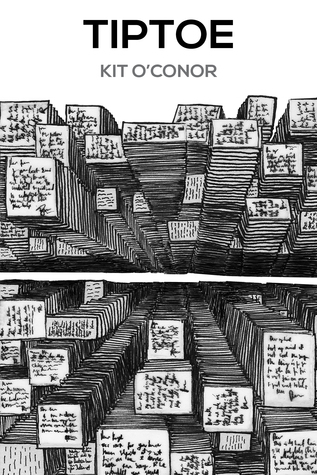
Kit O’Conor is a British author whose debut novel “Tiptoe” was released in 2013. Since graduating in Philosophy at Southampton University, Kit has travelled extensively and worked in many fields from sales to English teaching. Currently he lives in London running creative writing workshops and drafting his second novel.��
Tiptoe is a rich and complex novella. It is now being offered for the first time in the U.S. since its publication two years ago, where it garnered critical acclaim and many five-star reviews on Amazon UK���s site. Tiptoe is his first published piece of long fiction, and it’s a winner.��
The book chiefly tracks two compelling characters, Milo and Roan through everyday London as they try to make their way: Milo as a dissatisfied call center worker soliciting business for a local eye doctor; and Roan, a struggling performance artist who stands for ten hours a day on London street corners dressed in a suit of armor.��
We follow both young men as they struggle along, Milo through heavy ingestion of a white, milky drug called Tiptoe, and Roan through a tortured, daily examination of his art and how it might be changing him.��
The author paints rich word portraits of his characters, once saying of Roan that “Humour had become a peculiar thing to him. In recent months he had watched the world ever more intently, searching for it.” Indeed, Roan finds nothing funny about his existence, the world’s situation, or even his friends���including Pepper, a quirky street magician who sells flaming wallets, among other things.��
Milo, however, is arguably the most central character and is chronically bereft of direction. He goes each night to a club where he drinks Tiptoe and gyrates to the music and lasers, mostly dancing with himself or, occasionally, with the girls he picks up. These encounters should be a bright spot for Milo, but his depression robs him of any pleasure from the heated unions.����
And, of course, there’s one other little detail that stands between him and happiness: Milo’s married to Ivy, an elementary grade schoolteacher with an inordinately giant heart for her students. To complicate matters, he disappears regularly for days on end, sleeping in seedy walkup lodgings. This singular habit eventually leads to friction with Ivy, who has friction of her own from her younger sister, Ruth, who “wore a thin, braided headband and a sleeveless top to show off the tattoo she regretted.”��
While there is no plot, per se, to the book, it is enough to be carried along on O’Connor’s wonderful writing style, which is direct and, again, refreshingly full of satisfying description. Of one man in a story being told to a child about knights chasing dragons, he says, “One day, when (the knight’s) face was thick with frowns and whiskers, he reached the ends of the earth.”��
And another laudable turn of phrase: “As he handed over the whisky, he inspected Milo, from his missing shirt buttons to his wired pupils.” And yet one more: “Months passed, and he began to wonder what would be the most appropriate way, if he were to go mad.”��
Needless to say, I liked Tiptoe very much and look forward to O’Connor’s next literary endeavor. I hope it won’t be long.
��
��
��
��

March 31, 2015
Book Review: Trees of the Goddess by Elen Sentier
A fab review by Lenora.
 Originally posted on The Haunted Palace:
Originally posted on The Haunted Palace:
Trees of the Goddess by Elen Sentier
 Image taken from Moon Books website
Image taken from Moon Books website
Trees of the Goddess is a great little book, in only 101 pages Elen Sentier manages to introduce the main concepts of Ogham, the Celtic tree alphabet, and its application within the British Shamanic Tradition.
The book provides a primer for tree magic, and provides an explanation of the cycles of the sun and moon before covering the Ogham alphabet and ending with a series of deceptively straight forward sounding exercises and rituals.
As someone only vaguely aware of Ogham and aware of it only in the context of archaeological inscriptions, it was truly absorbing to find out more about the deeper more esoteric side of this alphabet.���� The book sets out the 13 months of the year, alongside the Ogham symbol and the corresponding British tree.�� A wealth of practical information such as��etymology, history, identifying features���
View original 217 more words

March 30, 2015
Review of Invisible by DelSheree Gladden
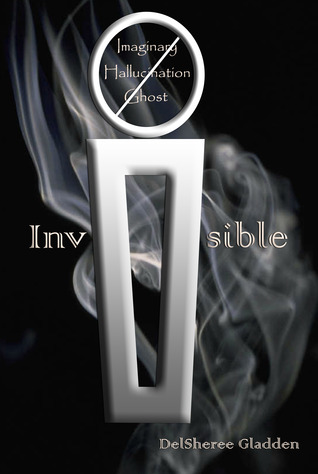
Invisible by DelSheree Gladden
About Ms Gladden:
��DelSheree Gladden lives in New Mexico with her husband and two children. The Southwest is a big influence in her writing because of its culture, beauty, and mythology. Local folk lore is strongly rooted in her writing, particularly ideas of prophecy, destiny, and talents born from natural abilities. When she is not writing, DelSheree is usually reading, painting, sewing, or working as a Dental Hygienist.
About Invisible:
The story started out in a rather unusual way. ���My best friend is not imaginary. He���s not a ghost, either. And I���m pretty sure he isn���t a hallucination. He���s just Mason. He is, however, invisible.���
The first chapter goes on to explain how this ���works��� in every day life: Mason lives with the main character of the story, Olivia, and her family. They are the only ones who know about Mason���s existence, and have managed to keep him a secret from everyone else for twelve years. The reader can see that over the years Olivia and Mason have found a groove that works for them. They have learned to live with and accept Mason���s uniqueness. However, at the time this book opens, their quiet life is about to be thrown into disorder.
Firstly, Mason has known for some time that his feelings for Olivia surpass hers for him, and he knows that it isn���t long until he has to talk to her about that. But also a new girl turns up at their school, and she can actually see Mason. Together they have to work out what this means and whether she is a friend or a foe.
I felt the first part was a little hard to get through. I didn���t get a strong ���feel��� for the story until about a third of the way in, when it accelerated in pace and I began to read more comfortably. I recommend that you give this book a try until at least 50%. Before that you won���t have a very good handle on the style of the book.
Essentially Invisible is a teen love story, dealing with the inevitable teenage angst, rivals and misunderstandings. However, the paranormal element adds another level of interest which will hook lovers of sci fi fiction. If you liked Twilight, this one is a definite winner, as it has many of the same combinations, with a little bit of an extra mystery, as no-one knows who or what Mason is, least of all himself.
The characters are believable and well-rounded, even if a little obtuse (well, they are only seventeen). There was a little too much drama (angst) for my liking, but again I don���t think I���m the target audience, and teen readers I���m sure will adore it. The relationship between the two main characters was pretty adorable up until they began to absolutely cling to each other as though they were each other���s oxygen. (Think Twilight). Mason is a wonderful protagonist, cool and calm and interesting. There is a lot about himself that he doesn���t even know yet, and I���m sure more will be revealed in the next book of this series. Perhaps without Olivia distracting him, or clinging to him and begging him not to leave her, he will have a chance to stretch a little. I also think that for fans of science fiction there may be a stronger sci fi feel to the next book, rather than a stress on romance.
DelSheree Gladden���s website: http://www.delshereegladden.blogspot.co.nz/
Invisible on Goodreads: https://www.goodreads.com/book/show/18681291-invisible
Available for FREE on Smashwords: http://www.smashwords.com/books/view/429346

March 28, 2015
Review: And A Child Will Lead Them by Marcus Herzig
I should probably say at this point that while I have a HUGE backlog of books to review, I also have a HUGE backlog of reviews from Joanne Armstrong and Don Sloan to post! I am going to attempt to address this properly over the next month! Jo read and reviewed this little gem ages ago!
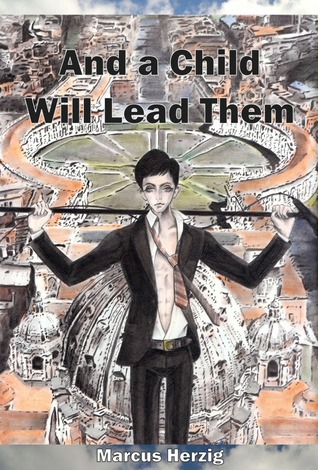
And a Child Will Lead Them by Marcus Herzig
Review by Joanne Armstrong
A little about Marcus Herzig:
Marcus Herzig was born in 1970 and studied Law, English, Educational Science, and Physics, albeit none of them with any tenacity or ambition. After dropping out of university he worked for bank, a utility company, and for Big Oil. He prefers sunsets over sunrises, white wine over red, beer over white wine, and pizza over pasta. His reaction to airplanes passing overhead resembles that of a seven-year-old seeing an ice cream van. Which, he insists, is a good thing.
Blurb from Goodreads:
A new Pope, a world in social and political chaos, and a young singer and songwriter who has his unbelief tested as his big mouth accidentally propels him towards global superstardom. These are the ingredients of this thought provoking, tongue-in-cheek debut novel. Seventeen-year-old Julian Monk never expected to be a famous singer, but when opportunity strikes, he strikes back and throws himself headfirst into that new, exciting world of record deals, TV interviews and screaming fan girls. His band mates are rather less enthusiastic about that new life they never really asked for. Dealing with their newly acquired fame and fortune is one thing; dealing with Julian is quite another. His sudden and unexpected metamorphosis from the shy and timid creature they have known all their lives into a surprisingly charismatic public speaker and global superstar takes everyone aback, and when Julian sets off on a very public crusade to replace faith and bigotry with reason and compassion, he raises more than just a few eyebrows. He raises hell, and his friends are no longer having any of it. Meanwhile at the Vatican, a former televangelist is elected Pope. Hell-bent on transforming the Church into a modern, ���hip��� institution, Pius XIII is giving his PR advisor a headache or two. Intrigued by Julian���s radical way of inspiring some people while antagonizing others ��� including his own friends ��� simply by preaching love and understanding, the new pope can���t help but wonder where he heard that storyline before. They say God has a plan for every man, but this man has a plan of his own – and it involves a teenage atheist pop star.
��My take on the book:
I hardly know where to start on this story. At first I thought it was a teen coming of age story. The flow and pace of the story worked really well with this assumption: four 17 year olds who are vaguely misfits, playing in a band in their spare time. I thought the story would follow a few small real-life teen adventures, or misadventures, and they���d get into a bit of trouble, then get out of it, learning something along the way. Yadda yadda.
The first sign I had of this book not following my expected path was when the band, through a mistimed (well-timed?) media revelation, actually became famous. Then rich beyond their wildest dreams. Then had a bigger message to spread.
That���s the general movement of the story, but doesn���t even begin to scratch the surface. The book is way, way more than just a story about a band that finds fame and how the four members, plucked from obscurity, cope with their stellar rise.
The four teens each present their very different points of view. Tummy comes from a deeply religious Catholic family, and has not yet analysed the reason why he calls himself a Catholic. He���s also been bullied all his life for being overweight and a bit of an idiot. Michael is a computer geek, brain the size of a planet, who spends more time with an artificially intelligent programme he created than eating or sleeping. Ginger is the only female in the group, comes from a loving and supportive home, and doesn���t feel she fits in with other kids her age since they are all immature yobs. Julian, the only group member not to have a voice in the book, has the most to say. He writes the lyrics and is the group���s mouthpiece. He creates for himself a worldwide stage on which he can stand and educate the masses.
Mr Herzig is a philosopher, there is no doubt about it. There were passages that I simply didn���t want to end; I became so engrossed in seeing how far the author would follow through with his ideas. I feared that he���d reach a question he couldn���t answer and just leave me hanging, but he never did. He���d considered everything.
I was tricked into reading philosophy, and I loved it. Early on in the book Julian spent a few pages comparing humanity���s evolutionary development with that of a single person, and I was so fascinated by it that I had to go back and read it twice. It had me cocking my head to the side and thinking, ���huh ��� fancy that������ So maybe this theory isn���t new, and maybe I���m late to the party, but I���d certainly never considered it in this way before and it had me enraptured.
Julian is a really interesting character. At 17, he���s much more intelligent than anyone else in the room, of which he is fully aware, making him also insufferably superior. As charismatic as a cult leader, as well-read as a university professor, and as ���well-considered��� as Descartes, he���s also Don Tillman��� which makes him a little bit of a jumble, but he really works. I was over three-quarters of the way through the book before it occurred to me that Julian had been peddling his wares, preaching from his own personal point of view, as far back as the others had ever known him, but since they hadn���t noticed, the reader hadn���t been allowed to either. This is so clever. All the band���s songs contain religious significance. Who wrote the lyrics? Julian. The other members all mention the reasons they are in the band at one time or another, and all downplay its importance ��� someplace to hang out, something to do, ���I���m just the bass player���, all they���re doing is playing covers of old tunes – and yet I suddenly realised that Julian didn���t see the band in the same way, and that he never had.
And the moment when Michael denied who he was��� let���s just say that���s when the scales fell away.

March 25, 2015
Review of The Existential Millennial Crisis by Paul Kuhn
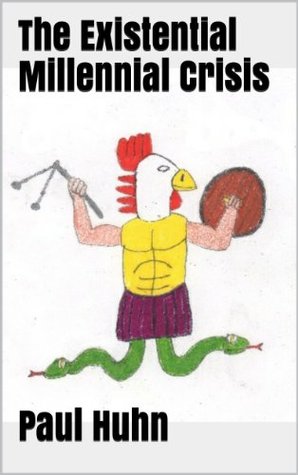
The Existential Millennial Crisis by Paul Kuhn is a collection of rants and raves on the human existence — or as much of a collection as a person with only twenty-five years of life experience can have.��
I recall vividly that at that age, things can seem pretty black and white, and Kuhn expounds liberally from his limited worldview on topics from philosophy to sex to religion with equally facile ease, liberally quoting from Jung, Kierkegaard, Joseph Campbell and others to make a collection of points that he feels articulate the current mindset of Millenials.��
He could be right. I’m not sure. But the loosely connected narrative that comprises this seventy-five page book is, at equal turns, profound and self-indulgent. This is not to say the book lacks merit. Indeed, it should be required reading for anyone over forty who wants a view into the often troubled and pessimistic view of life shared by many his age.
��The book’s often stream-of-consciousness writing style makes it seem at times more like a cathartic journal than anything else. In fact, he admits as much near the end, where the verbiage mellows out a little and we find that he in fact now finds life to be “pretty awesome,” after a self-confessed period through his teens and early twenties when he did drugs, alcohol and even attempted suicide at one point due to a serious mental and chemical imbalance. Thankfully, he survived, and this book recounts much of his struggle to overcome depression and find meaning in life.��
Make no mistake, though. The book contains a great deal of rough language and coarse observations that Kuhn feels compelled to make:��
“Look at the face of a woman during orgasm and her face while giving birth. The face during extreme pleasure and extreme pain are almost identical. Good and Evil don’t exist. They are just actions. The universe is indifferent.”��
“The idea of a Heaven and Hell seems like a trick of a spiteful ego.”��
“School is more about taming the human animal. You learn to sit at a desk and listen to people talk for seven hours a day. This prepares you for a career, which probably isn’t much different.”��
Kuhn at times seems to feel as though he and a group of friends in high school and college were the first to experience marijuana, psychedelic drugs and alcohol to excess. I’m sixty-five and even at my advanced age I can remember both the exhilaration and the depression that came from my own use of these substances in the Sixties. And even we, in that free and easy time, didn’t invent substance abuse. Paul, I feel your pain, as an ex-President so famously said.��
This book is at turns enlightening and troubling. And, as I said, it presents an insight into the thought processes and emotional state of at least one Millenial. I have no doubts that some of his raw truisms will resonate with many of his peers. And, it will expand the thinking of many, who haven’t been exposed to concepts such as Gnosticism. For that, I applaud him. He speaks to his audience in a language they will understand.��
I give this book a rating of four stars.
��
��

March 22, 2015
Persecution in the 17th Century: The Newcastle Witch Trials of 1649-1650
Originally posted on Johns blog
Persecution in the 17th Century: the Newcastle witch trials of 1649-1650
��Thanks in part to rapid industrialisation in the mid-seventeenth century in Tyneside, the Chares of old Newcastle town were full of poverty, disease and serious organised crime. Having recently endured the bubonic plague (1636) which had wiped out nearly one-third of the population. The survivors not only had to put up with abysmal living conditions. (40% of all households had no proper source of heat) they had also been caught up in the English Civil War, which had resulted in the bloody siege of Newcastle.��
The Puritans Move In
During the English Civil War, Newcastle became an important source of wealth for King Charles I, thanks to its highly profitable coal mine. When Charles I made the mistake of forcing the English Prayer Book on all of Scotland. London merchants jumped at the opportunity to take away one of the king’s most profitable hubs and the battle for control of the strategic town of Newcastle began. Along with their alternative take on the Bible, the Scottish Covenanters also brought with them a fear of witchcraft that would have cataclysmic consequences for the people of old Newcastle town.��
A Fear of Witches Builds
It is important to keep this in the context of the 17th century, rather than 21st century beliefs. The vast majority of the population at that time would already have an ingrained belief in demonology and witchcraft. Witches and demons existed in their world, period, and so it isn���t hard to understand how the Covenanters (sometimes also called Puritans) interpretation of the Bible fanned the flames of suspicion. They cited passages such as “thou shalt not suffer a witch to live” from Exodus, and took in a very literal sense. It wasn���t long before the services of witch-finders, or witch-prickers were called upon. A rogue witch-pricker from north of the border saw Newcastle as an easy target to make some money and moved into the area to “root out local witches” in 1649.
The Puritan’s of the Corporation welcomed the arrival of the witch-pricker as an opportunity to set the locals against one another and help them vent their frustrations on each other rather than the Puritans themselves. The Magistrate’s Bellman was sent around town letting everyone know of the pricker’s existence and was responsible for bringing forward any complaints held against possible witches around town. A total of 30 people were brought in front of the pricker for the suspicion of witchcraft.
Forcing the “Witches” to Confess
Witch-prickers or witch-finders were not afraid to use barbaric means to get the ���witches��� that they captured “witches” to confess to their crimes. They would often deprive the poor souls of sleep and make them walk around for hours until they finally broke, sealing their fate. Possible witches were also subject to humiliation when determining their final verdict. They were often stripped to look for “witch marks” which would then be pricked for blood. If the mark did not bleed, they were a witch and would be tried as such. What people didn’t know was that many witch-hunters relied on retractable bodkins to press witch marks to ensure they did not bleed and that the hunter could collect their pay.
The Trial
Each of the 30 suspects were brought before the pricker and tested for witchcraft. A total of 27 of the 30 accused witches were marked as guilty and set to be hanged. Out of the 27 several were spared thanks to the intervention of select townspeople such as Lieutenant Colonel Hobson. Freedom, The Sensual Liaisons Series book one, which I have wrote under my pen name Luna Ballantyne, begins to set the backdrop for both the siege of Newcastle and the ensuing witch trials. Both of which will be explored in depth throughout the rest of the series.
The Spared Witch
Most of the women tried were described as “old crones”, not the most attractive to behold and well past their prime, but the final woman was quite different. She was young, and described by Lieutenant Colonel Hobson as “handsome”. Hobson watched on in horror as the witch-pricker pulled up the woman’s clothes, exposing her to the onlooking crowd. He supposedly pricked her on the thigh, and the woman admitted that she felt nothing and the Bodkin came away clean with no blood to show. Hobson, sensing that a trick was being used, implored first that the woman not be tried at all, but when that didn’t work he asked that she be tested again in a more appropriate manner. The second bodkin prick happened in plain sight and caused the woman to bleed proving her innocence to the group. Even though Hobson intervened and tried helping some of the other accused, 17 women and a single man were all executed by hanging on the Town Moor in August of 1650.��
A Time for Persecution
Unfortunately, the idea of persecuting witches by executing and torturing them wasn’t only limited to England or the well-known Salem Witch trials of 1692. In 1609-1611 Spanish Inquisitors in the Basque area of Spain, vowed to rid themselves of all witches, and examined over 7,000 possible cases. A group of 31 ���witches��� suffered a harsh fate in Lograno with many tortured, publicly punished and a few burned at the stake. However, these trials resulted in the end of most supposed witch deaths in Spain, long before they ended in other countries around the world. While most people, today would be incredulous at the notion of ���witches��� practising their dark arts in the local community. Ignorance and a resistance to alternative treatments and healing as well as major social unrest and uncertainty all fed into the tinder box that made the 17th Century, one of the darkest of all times.


